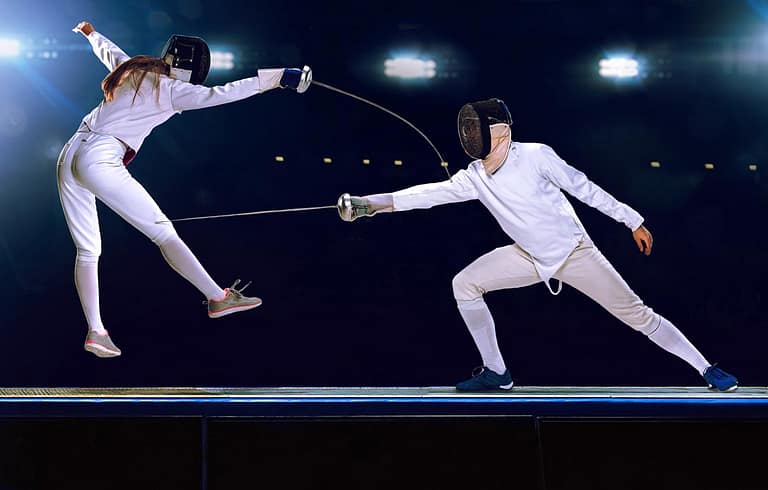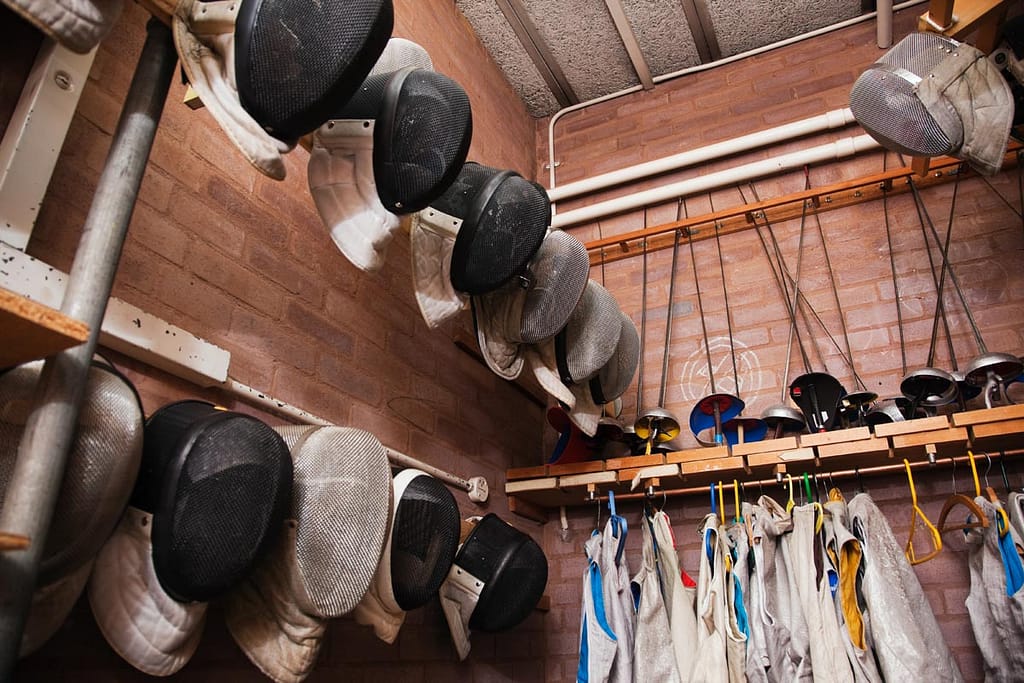What is Fencing: An Essential History of the Noble Sport
What is fencing? A sport that’s been around for centuries. And it’s got a pretty interesting history too. It all started way back in the 16th century. People used swords for self-defense and military training. But then they realized it could be a fun sport too.
Over time, fencing evolved. They came up with rules. And different types of swords. The foil, épée, and sabre. Each with its own unique style.
Fencing became popular among the nobility. It was a way to show off their skills. And settle disputes in a “civilized” manner. Duels were a big deal back then.
As guns became more common, swords weren’t really needed for self-defense anymore. But fencing lived on as a sport. It even made its way into the Olympics. And has been a part of it since 1896.

The Three Weapons of Fencing: Foil, Épée, and Sabre
Like I mentioned before, there are three types of swords used in fencing. The foil, épée, and sabre. Each one has its own set of rules. And techniques.
First up, the foil. It’s a light, flexible sword. The target area is limited to the torso. And you can only score points with the tip of the blade.
Next, there’s the épée. It’s similar to the foil. But heavier and stiffer. And the whole body is fair game for scoring points.
Last but not least, the sabre. It’s a light cutting and thrusting weapon. The target area is from the waist up. Including the head and arms. And you can score with the edge of the blade too.
Understanding the Rules and Scoring in Fencing
Fencing has its own unique set of rules. And scoring system. It can be a bit confusing at first. But once you get the hang of it, it’s not so bad.
Basically, the goal is to score points by landing hits on your opponent. The exact rules depend on which weapon you’re using. Foil and sabre have “right of way” rules. Meaning the person who starts an attack has priority. The other person has to parry or counter-attack.
In épée, there’s no right of way. It’s just whoever hits first gets the point. If both fencers hit at the same time, they both get a point.
Points are scored using an electronic scoring system. Each fencer wears a body cord. It connects their weapon to the scoring machine. When a hit is made, the machine lights up. And awards the point.
Essential Fencing Gear: Mask, Jacket, and More
Fencing involves a lot of specialized gear. The most important piece is the mask. It protects the face and head from injuries.
Fencers also wear a protective jacket and breeches. They’re made of tough, durable fabric. To withstand the constant poking and prodding of the swords.
Other essential gear includes:
- Plastron: an underarm protector
- Glove: to protect the weapon hand
- Shoes: for good traction on the strip
- Body cord: to connect to the scoring machine
Footwork and Blade Work: Mastering Fencing Techniques
Fencing is a lot more than just swinging a sword around. It requires precise footwork and blade control.
Some basic footwork techniques include:
- Advance: moving forward
- Retreat: moving backward
- Lunge: a quick, explosive forward movement
Blade work involves a variety of offensive and defensive techniques:
- Attack: initiating an offensive action
- Parry: blocking an opponent’s attack
- Riposte: an attack made immediately after a parry
- Counter-attack: attacking into an opponent’s attack
- Feint: a fake attack to draw a reaction from the opponent
Mastering these techniques takes a lot of practice. But with dedication and hard work, anyone can become a skilled fencer.

Fencing Strategies: Offense, Defense, and Counter-Attacks
Fencing is as much a mental game as it is physical. You have to outsmart your opponent. And anticipate their moves.
A good fencing strategy involves a mix of offense, defense, and counter-attacks.
On offense, you want to take control of the bout. Dictate the pace. And keep your opponent on their toes with a variety of attacks.
On defense, you need to be able to read your opponent’s moves. Parry their attacks. And look for openings to riposte.
Counter-attacks are a way to seize the initiative. And catch your opponent off guard. But they can be risky. So you have to choose your moments carefully.
Fencing at the Olympics: A Tradition of Excellence
Fencing has been a part of the Olympic Games since 1896. It’s one of only a handful of sports that have been featured at every modern Olympics.
Over the years, fencing has produced some legendary Olympic champions. Like Italians Nedo Nadi and Edoardo Mangiarotti. And French fencer Christian d’Oriola.
Today, fencing is still going strong at the Olympics. With competitions in all three weapons. For both men and women. It’s a chance for the world’s best fencers to showcase their skills. And go for gold.

Famous Fencers and Their Legendary Bouts
Throughout history, there have been many famous fencers. And legendary bouts. Here are just a few examples:
-
Italo Santelli vs. Lucien Gaudin: A classic foil match at the 1920 Olympics. Santelli, an Italian-American, faced off against Frenchman Gaudin. In a close and intense bout. Gaudin ultimately won. But Santelli was so impressive. The crowd carried him off on their shoulders.
-
Christian d’Oriola vs. Giancarlo Bergamini: Another epic Olympic foil match. This time at the 1956 Games in Melbourne. D’Oriola and Bergamini were two of the best foil fencers of their generation. And their semi-final bout was a nail-biter. D’Oriola came out on top. And went on to win his fourth Olympic gold medal.
-
Valentina Vezzali vs. Giovanna Trillini: A more recent rivalry in women’s foil. Vezzali and Trillini are two of Italy’s greatest fencers. They faced each other numerous times over their careers. With Vezzali usually coming out on top. Including in the gold medal match at the 2000 Olympics in Sydney.
Physical and Mental Benefits of Fencing
Fencing isn’t just a fun and exciting sport. It also offers a ton of physical and mental benefits.
Physically, fencing is a great workout. It requires speed, agility, coordination, and endurance. It works pretty much every muscle group in the body.
Mentally, fencing is like a game of chess. It requires strategy, problem-solving, and quick decision-making. It’s a great way to exercise your brain. And keep your mind sharp.
Fencing also teaches important life skills. Like discipline, respect, and sportsmanship. You learn to win graciously. And lose with dignity.

